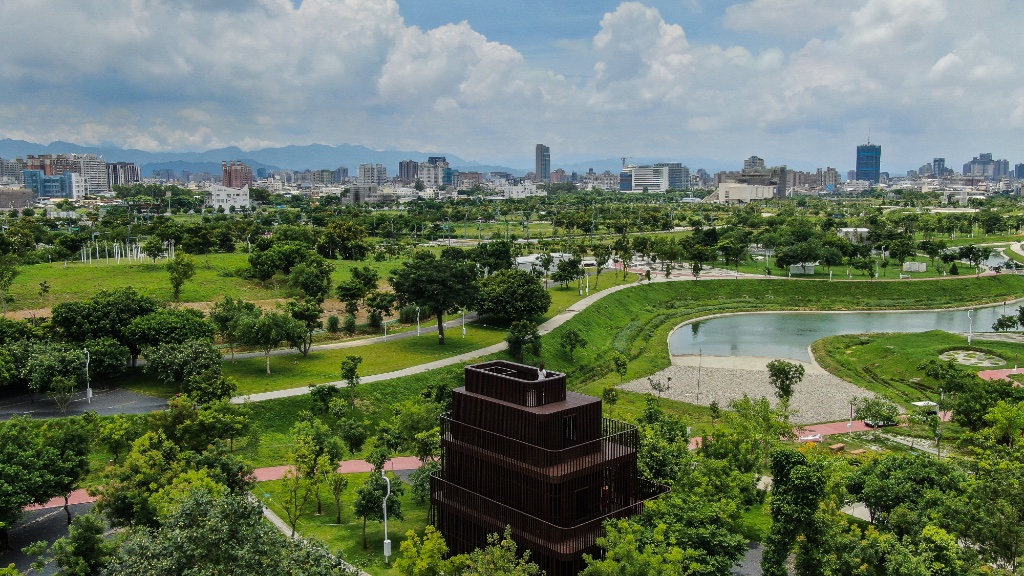With all the ongoing attacks by climate activists on famous artworks – the most recent, the notorious (pumpkin?) soup-bombing of the Mona Lisa in the Louvre last week, which made headlines around the globe – the art world is finding it harder and harder to ignore global warming.
One current exhibition, “Demain Est Annulé” (“Tomorrow Is Canceled”) – the title is intentionally crossed out to indicate that there is hope – confronts the subject with works by 23 artists. Ironically, it is being held in the exhibition space of the Fondation EDF, the foundation of France’s state-owned electric utility, in one of its disused electrical substations (a handsome example of early-20th-century industrial architecture, designed by the architect Paul Friesé). It seems strange to wander through this setting looking at artworks announcing/denouncing the destruction of the environment. The show is interspersed with videos of talking heads – scientists, historians, philosophers, etc. – responding to questions like “What role can technological advances play in a more sober world?” The exhibition proposes “sobriety” as a possible solution to environmental woes, which seems a bit on the soft side.
It starts off strongly with an installation by Bianca Argimón, “Zen Garden” (2022). Inspired by a dry Japanese garden of raked sand (which represents water), it imitates a pool, in which a few men are drowning. We see only bits and pieces of their bodies: a hand here, a foot there, the back of body, its head in the sand, ostrich-like. Its warning message is powerful – get your head out of the sand! – but communicated with attention-getting humor.

Much more subtle is the intriguing “The Diamond Stone,” by the collective Art Orienté Objet (Marion Laval-Jeantet and Benoît Mangin), inspired by the 2005 book Collapse by the American scientist and historian Jared Diamond, which looks at how some past societies collapsed for environmental reasons while others survived and examines why things happened as they did. The work itself consists of an ancient fossil-encrusted stone from Morocco etched with characters and hieroglyphs representing those past societies and our current world.
Another attention-getter is Jordan Roger’s “Burn Them All” (2022; pictured at the top of this page), a ceramic fairy-tale castle seemingly straight out of Barbieland, or, more pertinently, Disney World. Look closely, and you will see that the pretty candy-colored structures are crumbling and going up in flames. This piece was inspired by Florida’s “Don’t Say Gay” law, passed in 2022, banning most classroom discussions of gender identity and sexual orientation.

One exhibit details in videos, photos and plans not an artwork but a park (designed by Philippe Rahm Architects, Mosbach Landscape Architects and Ricky Liu & Associates), which offers an example of how human ingenuity and technology can help compensate (at least on a small scale) for the damage we have done to the Earth. Given the heat, humidity and pollution of its site in Taichung, Taiwan, where Jade Eco Park is located, it is equipped with islands of cool, fresh, clean, mosquito-free air where people can enjoy the outdoors without suffering from the effects of the local climate and climate change. This “smart ecology park” uses natural devices, i.e., trees, and artificial devices to create these effects. As laudable as the project is, it provides much food for thought: Is the only way we can compensate for the damage caused by human manipulation of nature more manipulation of nature?
The exhibition is free, fun and informative. Let’s hope all the top executives at the EDF pay a visit to it and pay attention to its message – and, given that message, that climate activists will hold back on the soup.
See our list of Current & Upcoming Exhibitions to find out what else is happening in the Paris art world.
Favorite

